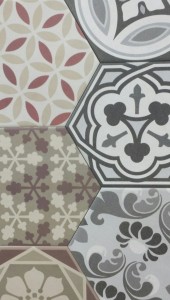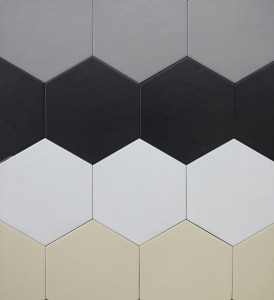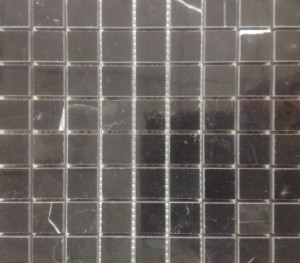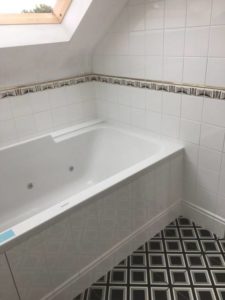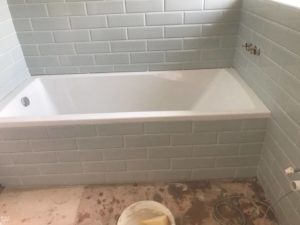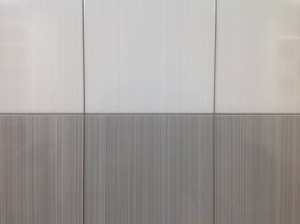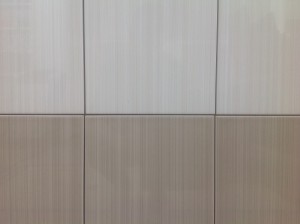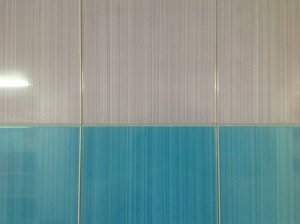We have recently added these porcelain, hexagonal wall and floor tiles to our showroom, perfect for bathrooms or contemporary kitchens.
Category: Uncategorized
Marble Mosaics
These are just a few examples of our natural marble stone mosaics and are fine examples of Dark Emprador, Italian Carrara and Marquina marbles respectively. Call in to our shop or visit our showroom for more information on these tiles as well as anything else you may be interested in.
Brighton Wall And Floor Tiles
These ceramic Brighton wall and floor tiles are perfect for a bathroom wall feature wall or a kitchen splash back due to their clean elegance and easy wipe surfaces.
The Use of Stone in the Modern Household
Stone brings an appealing sense of tradition and character to our homes and its uses are many when it comes to interior design, tiling, outdoor decoration and so on. Stone has always been the stalwart of basic construction techniques which is why many people have embraced its unique design and structure to develop the character and overall attractiveness of their homes. Let’s have a look at a few examples of the use of stone in our homes today and how these ideas have been inspired by period tradition.
Tiling has become the norm for most bathrooms, whether it’s on the floor, on the walls or even to add a decorative spark to various bathroom appliances such as sinks and shower areas. Limestone tiles emit a natural atmosphere that helps us feel strangely comfortable when taking a shower for example. The stone decorated baths that look to imitate Mediterranean rock pools gives us an example of how stone has become the comfortable material to be around.
Sometimes stone can be boring, like with drive ways for example. Let’s face it, you hardly care to notice what platform the car is situated on and you’re probably far more interested in the car itself. However, many homeowners have looked to make the most of their driveways to create some pretty nifty design ideas. Beautifully rounded pebbles are commonplace on many designer drive ways these days, whilst flat concrete slabs are being swapped with shingle to provide a touch of uniqueness. You can potentially use a variety of stones that have come fresh from the ocean to further decorate your driveway and really impress the neighbours. Without doubt, there are options available to you.
Stone has become a much more popular choice of material in recent years thanks to the aspects of character it can potentially bring to a home. Stone Tiles Emporium have a wide range of stone tiles available that come in all different shapes and designs. If you’re interested in integrating some natural beauty into your home, contact Stone Tiles Emporium for further details.
Modern tiling ideas for your kitchen
Many new builds nowadays can really thrive with the addition of some modern tiling, especially in the kitchen area. Your new build may have an isolated kitchen, though the majority of modern houses create a wide open space for the kitchen to expand out on to. Here are a few modern kitchen tiling ideas that could really work with your current contemporary interior design.
Slate is made of mostly microscopic clay materials and can sometimes have a few granite minerals, making it a reasonably sturdy option. Slate has a beautifully natural colour and its texture is capable of creating a unique style and feel. Slate can also be regarded as environmentally friendly thanks to its hardwearing nature. It is an affordable option whatever level of quality you’re looking for.
Limestone can be used on both modern and traditional interiors thanks to its adaptability. It is an extremely popular choice on the market. It is a reasonably simple style of tiling and doesn’t provide the distinct natural effect that you get from slate, though it can come in an array of unique colours. You can use it on your kitchen walls or floors thanks to the vast amounts of choice that you have with this particular form of tile.
If you want something that screams contemporary interior design in a modern household, granite could be the choice for you. Granite tiles are sleek and polished to perfection. They are easy to maintain and will last a lifetime, so they can be regarded as environmentally friendly. They are a trendy option at the moment thanks to their eye-catching shape and structure.
If you need further advice about improving your modern kitchen designs or feel your kitchen could really come to life using any of the tiles mentioned above, why not check out the Stone Tile Emporiums great range of stone tiling or contact us today for a further consultation.
The Slate Appeal: Why is it so popular?
Slate has become a hugely popular material for tiling purpose and many homeowners have made the most if it’s range of different colours, textures and patterns. Slate can work in all sorts of homes, from kitchens to bathrooms and from older, more traditional builds through to contemporary interior design. So what’s the big appeal with Slate and why has it managed to allure people from a wide variety of different style preferences?
Slate is built from very fine grained rock which consists mostly of tony clay minerals along with microscopic bits of quartz and calcite. This is what creates the unique textural effects with slate. The wavy patterns that you may notice on your slate tiles look beautifully natural and can really emphasise the character of a home, whether it’s a contemporary or period property.
Some of the minerals found in Slate are actually similar or identical to those found in Granite, meaning that the common fear of Slate being reasonably easy to crack is nullified. Granite contains very strong minerals that keep it sturdy and long-lasting. Slate can sometimes contain these minerals as well, so people won’t have to worry about slate being a short-term option.
The wide range of colour that you could stumble upon with Slate is the consequence of trace metals being present, which is the same with stones including Limestone and Marble. These dramatic colours are also emphasised by the way in which Slate is split. The natural layers that are created from the process of splitting Slate exposes the trace metals to the atmosphere which causes a reaction called oxidisation.
So why is it such an appealing form of tiling? Slate is available in all different shapes and sizes so it can be easily customised. Whether its a riven finish your after or something a lot smoother, both traditional and modern homes can really benefit from the stunningly natural beauty that slate conveys.
Top Bathroom Trends of this Year
It’s been a great year for people working on the interior design of their Bathroom and we’ve seen all sorts of trends take centre stage over the last 12 months. From the incorporation of natural elements in to the bathroom through to the delicate finishing touches and minimalistic design ideas, bathrooms have been kitted out to match all sorts of style preferences. So what kind of interior design trends released this year could potentially interest you? Here’s a selection of some of the top bathroom trends from this year.
Furniture
Furnishing has been exploited to the full this year, with the ideal storage units proving to work wonders when it comes to emphasising the space in a kitchen and ridding your space of unwanted clutter. Beautifully furnished wood works perfectly with both contemporary and period design ideas and has proved to be a big hit this year.
Accessorise
People have swayed towards adding their own finishing touches to bathrooms for many years and this year has been no exception. Added features such as lighting effects, polished finishes, unique tiling ideas, mirrors and ornaments are all capable of adding a little bit of personality to your bathroom space.
The Natural Effect
Plants are usually found in the front room or conservatory area in homes but this year bathrooms seem to have got in on the act. Whilst the odd potted plant in your bathroom may not be too much of a surprise, the integration of natural products in bathrooms this year seems to have worked wonders. From natural wood to mosaic tiles, features like these are starting to become the norm in bathrooms across the country.
The benefits of using marble in your home
When we hear the word marble we think shiny, decorative stonework or something with style that really brings out the best of interior design prospects. The word “marble” actually comes from marmaros, which means shining stone. Pure marble would offer a shiny, whitish finish tough the majority of interior design ideas that use marble will have various minerals added to it, producing a variety of extravagant colours and patterns.
Marble is extremely popular in India and is often used in its natural form in households across the country. There are many genuine advantages of using marble in your home, including their wonderful design and decoration prospects. Its natural patterns are ideal for anyone looking for something unique for their kitchen or bathroom tiling. It’s genuinely spectacular look is an excellent alternative to something like slate. Marble is also very easily cleaned, especially if has an added sealant.
Marble is an extremely tough product which is why you often see entire constructions or buildings made completely of marble. Marble is also one of the most heat resistant types of stone around, making homes during the summer time much cooler than that of buildings made from other forms of stone. This could explain its popularity in Asia and other countries that experience a hot summer.
Here at the Stone Tile Emporium, we make the most of the potential marble has to create a stunning array of marble tiles that are perfect for all sorts of interior design ideas. Contact the Stone Tile Emporium today for more information on our range of stone tiles.
Cleaning Stone Tiles
With kitchens being one of the most popular rooms for stone tiling, you can expect your cherished tiles to be affected by the daily kitchen routine. Over time, tiles can become dirtier as a result of frying food nearby and this can lead to long term staining. In addition, your tiles could get ruined before you’ve even had a chance to enjoy them if you haven’t applied an effective sealant beforehand. Here are a few ways to deal with stone tiles that have attracted stains and gathered dust over the years.
The most effective way of cleaning stone tiles is to use a mop. You can create a solution yourself that will get rid of any stains that have resided for months or even years. First off, equip yourself with a broom and sweep up the dust that has collected on the surface. Use a dustpan for any difficult areas that need to be freed of dust.
The next thing to do is to get a bucket of warm water. Mix the water with a mild detergent or a soapy substance that is intended for cleaning stone. With mop in hand, press it into the bucket of solution and target the areas of the flooring that have accumulated the majority of stains. Mopping helps to get rid of any collected dirt that has gathered in between the tiles themselves. It’s important that you empty the bucket of dirty water so that you aren’t just applying dirty water back on to the tiles.
After mopping, dry the area with a cloth or leave it to rest for an hour or so. The cleaning solution will take effect and those troublesome stains will be gone. It’s as simple as that. Make sure you check that your specific stone tiles, whether it’s marble or limestone flooring, are capable of working well with the solution that you use.
Got some spare tiles going?
You might have just finished tiling your bathroom walls or wiping over your newly installed floor tiles in the conservatory and realised you’ve got a bunch of spare tiles left over. Before you decide to chuck them in the skip, here are a few alternative uses for stone tiles that might appeal to you.
Coasters
This is a great option if you’ve got some stylish tiles that simply can’t go to waste. Tiles like this can be great for table coasters as they are but you can also fit rubber material underneath to provide solidity. Varnish them for extra longevity.
Borders
You might have a mirror fixed to the wall in your home that looks a bit plain at the moment. Never fear, as a spare set of stone tiles can provide the perfect canvas for a decorative border. Plain tiles can be painted or even sculpted for added effect.
Mosaics
Stone Tile Emporium have a great selection of stone mosaic tiles on offer but if you fancy having a go at it yourself, why not take your spare tiles and become a bit of an artist? Create some pretty mosaics that suit you or loved ones preferences for a great gift idea.
Tabletop
If you’ve got a tabletop without much sparkle or attraction, have a go at painting some designs for a truly unique tabletop. From a small garden surface to a larger living room table, this is a great way to establish your own personal tastes in your home.
